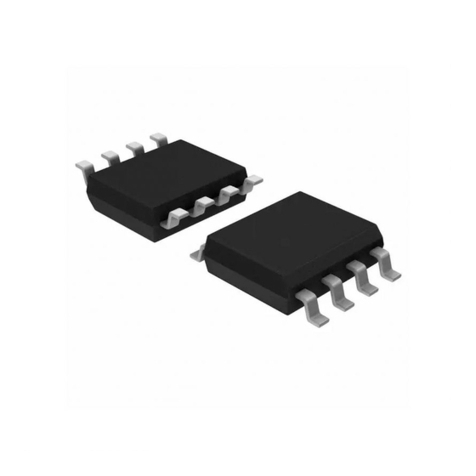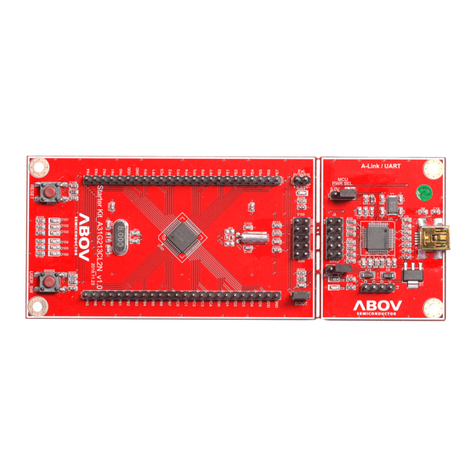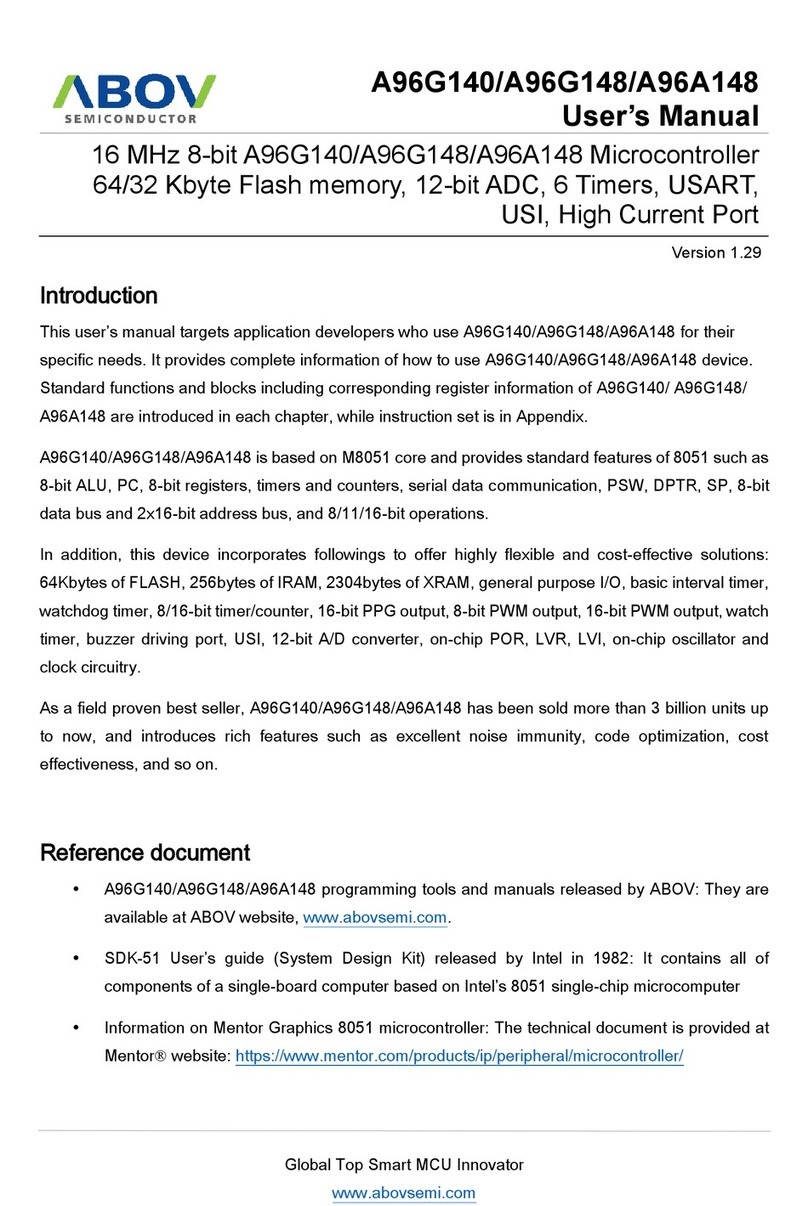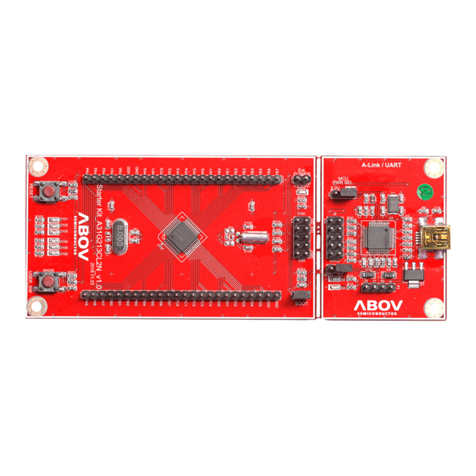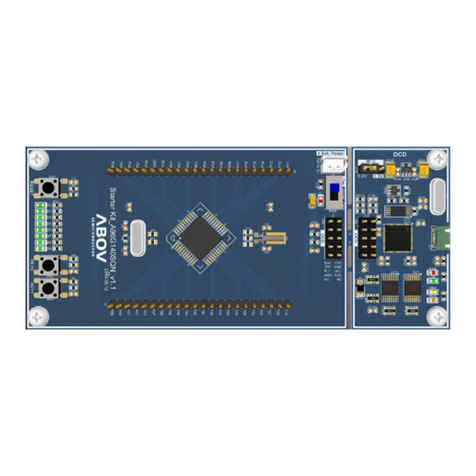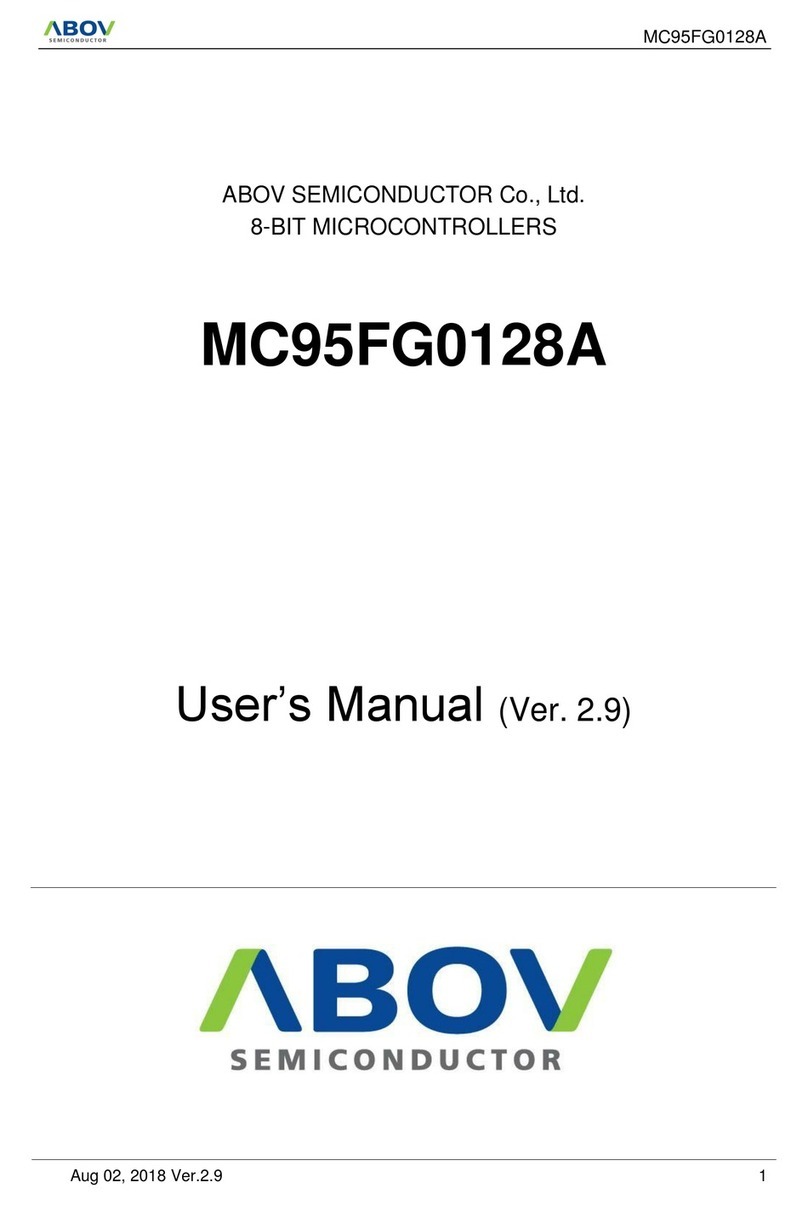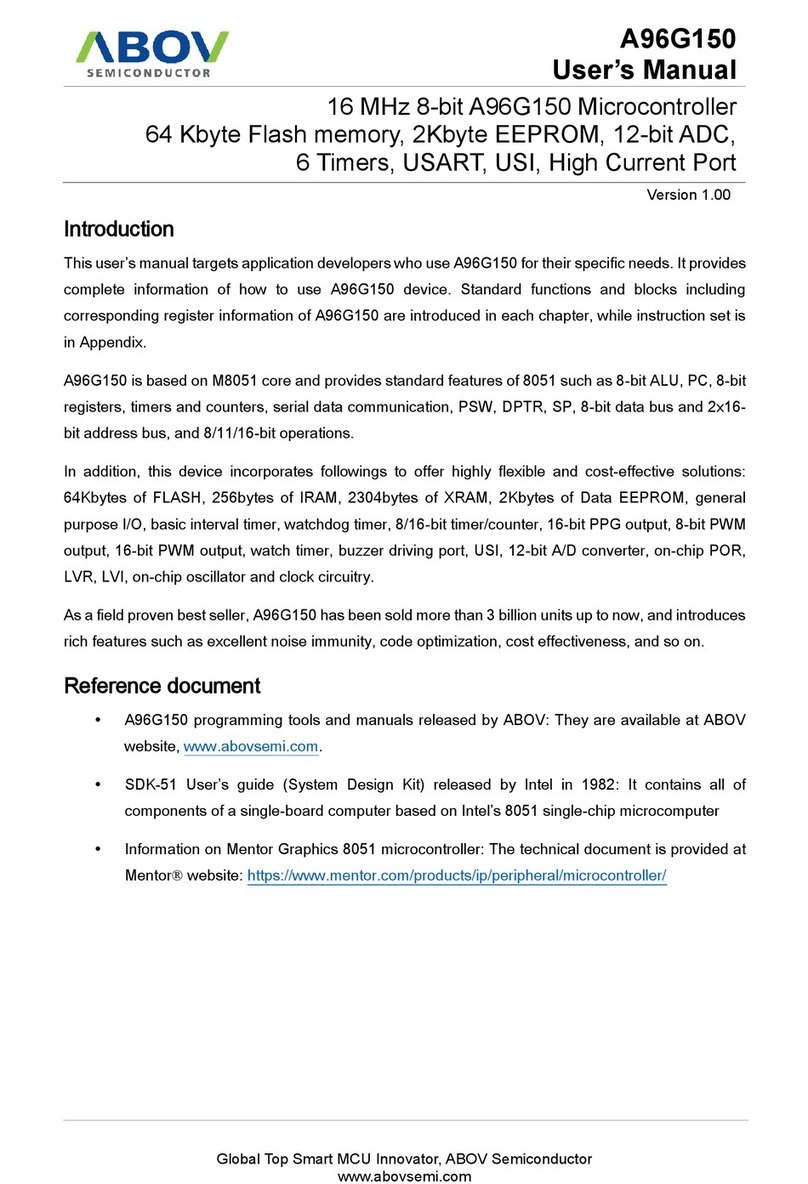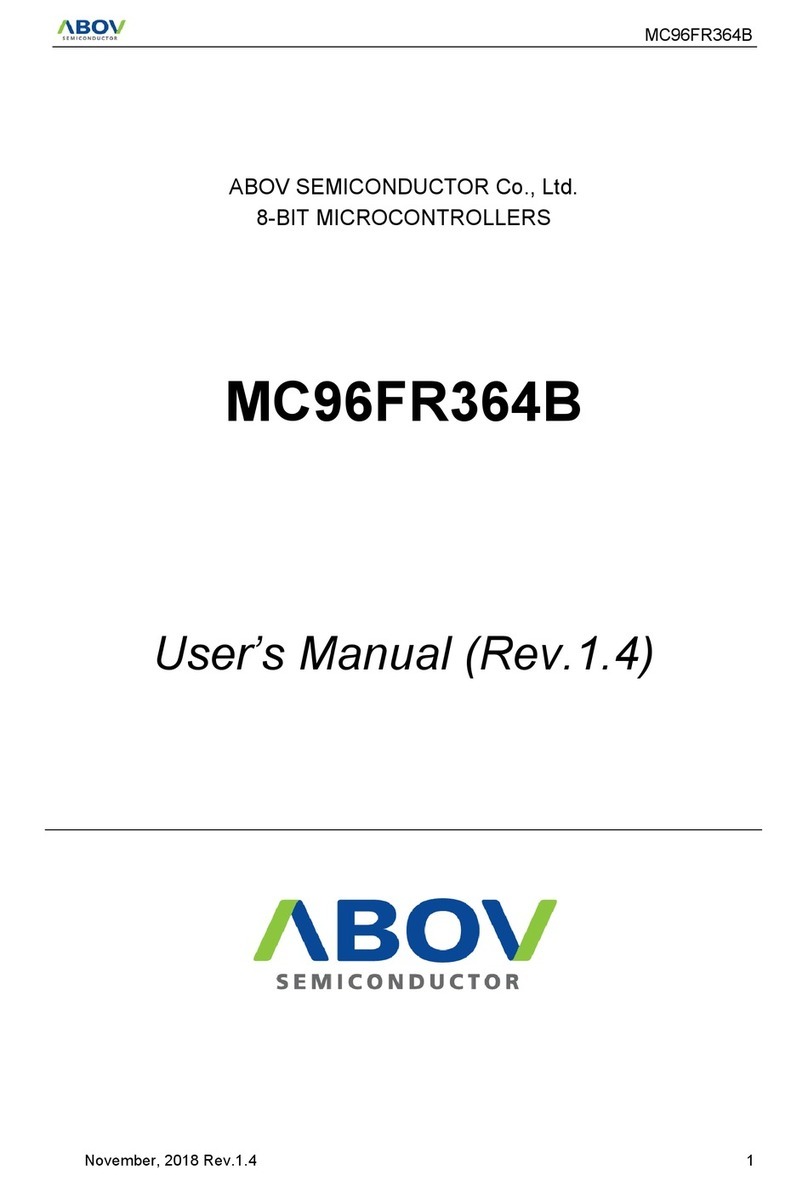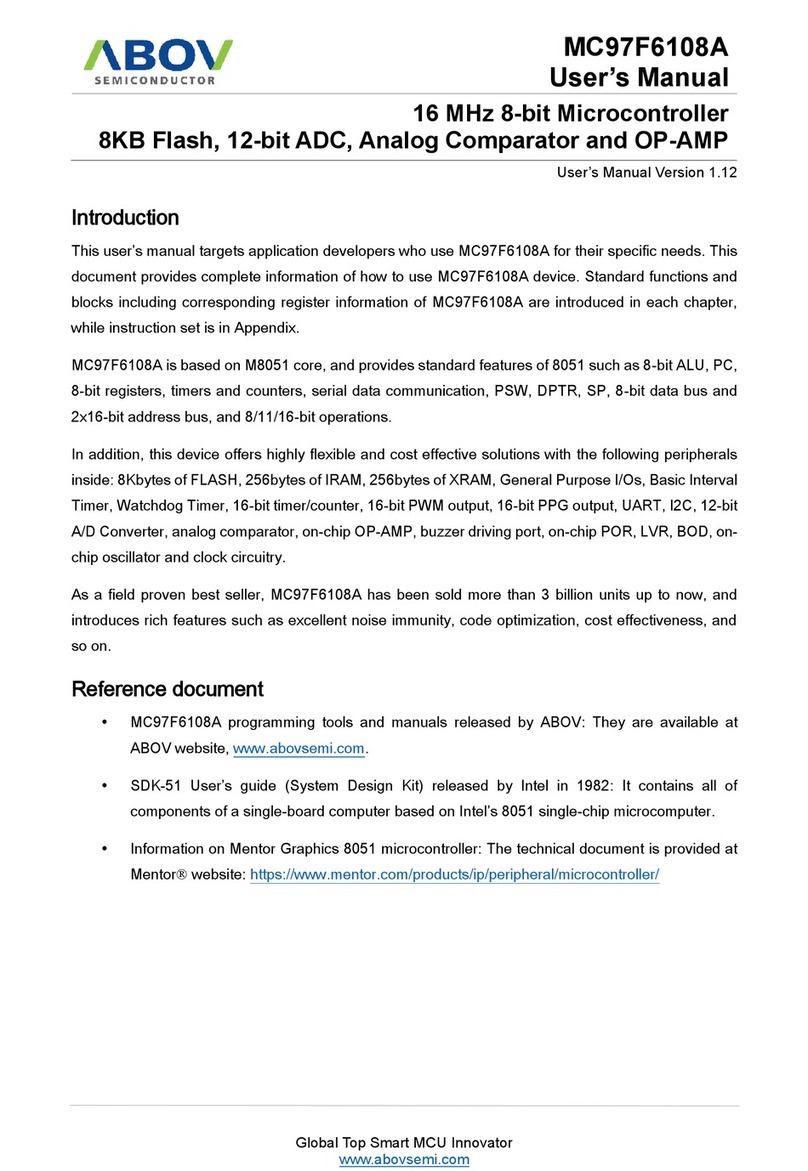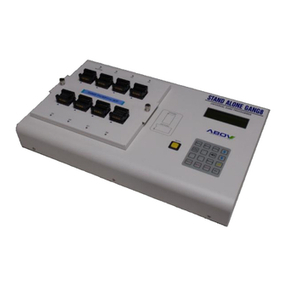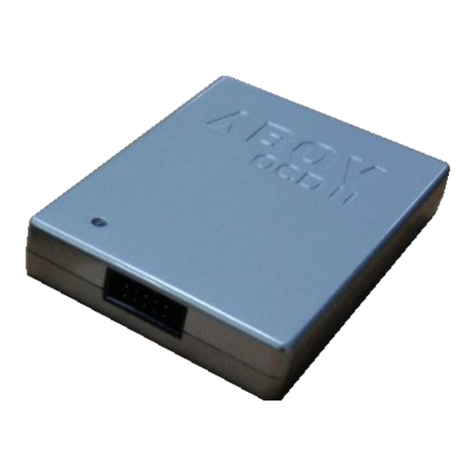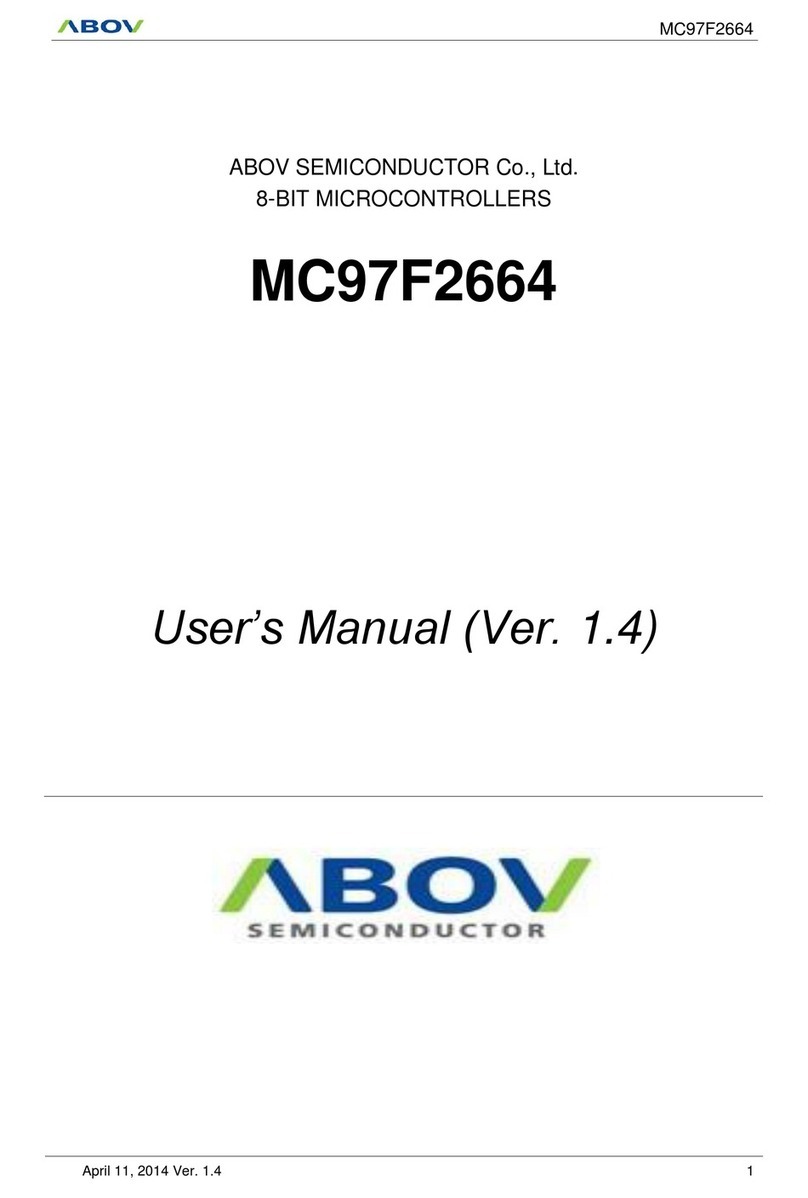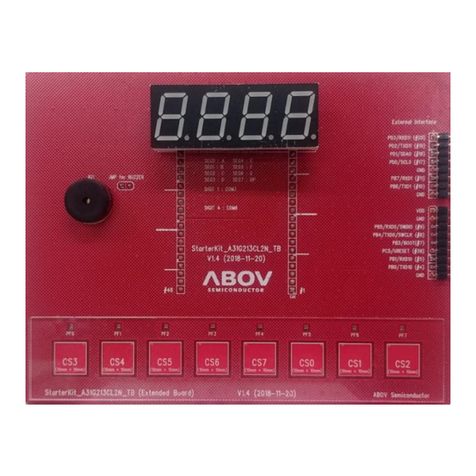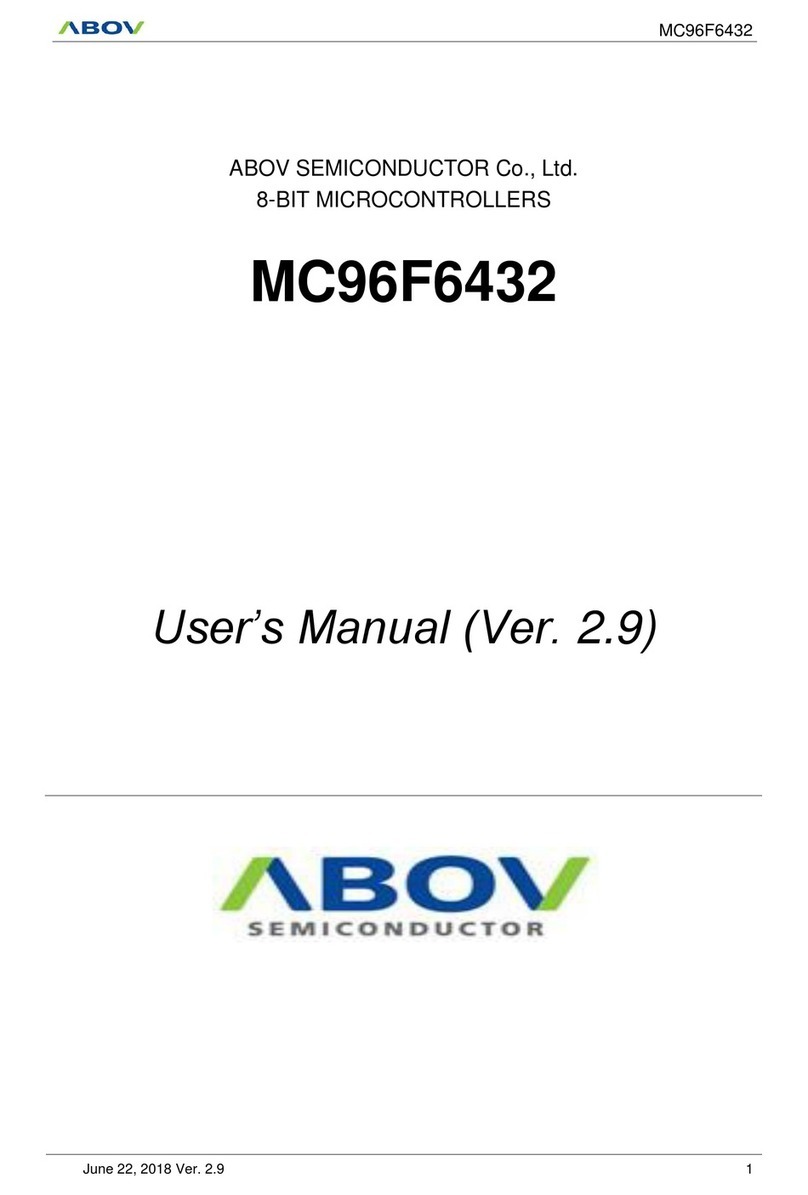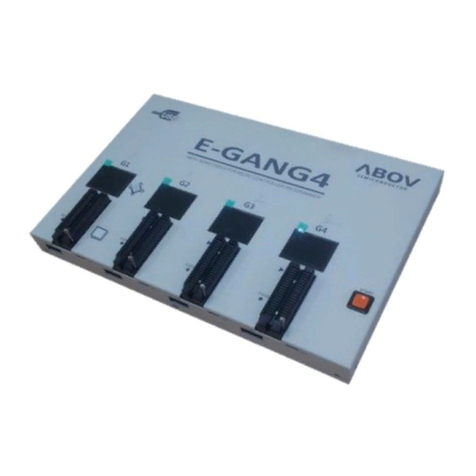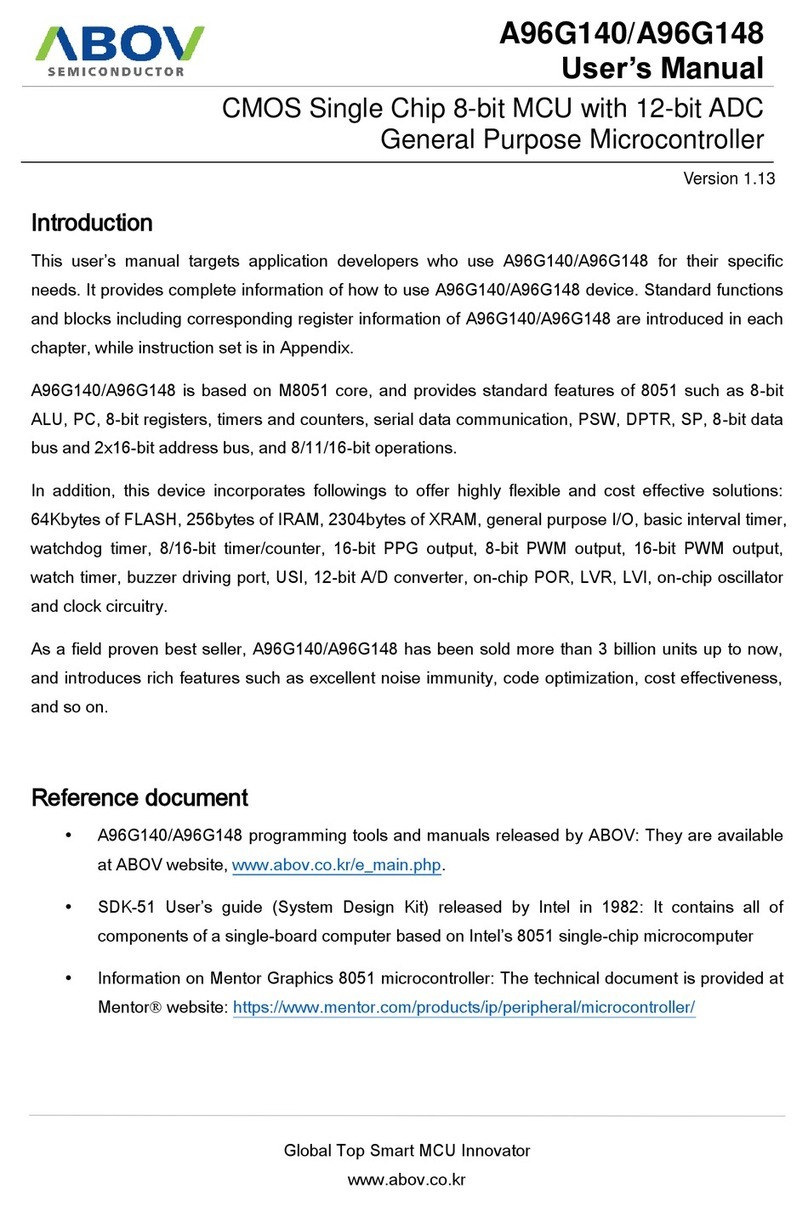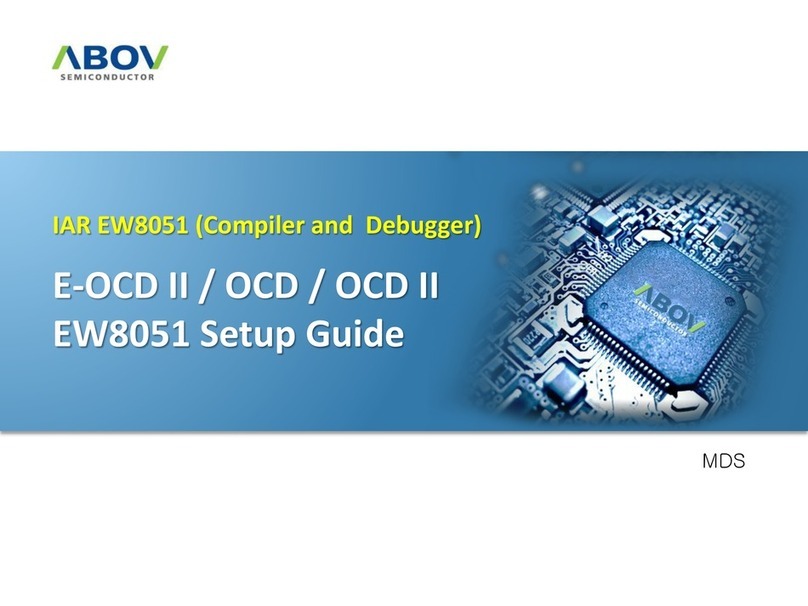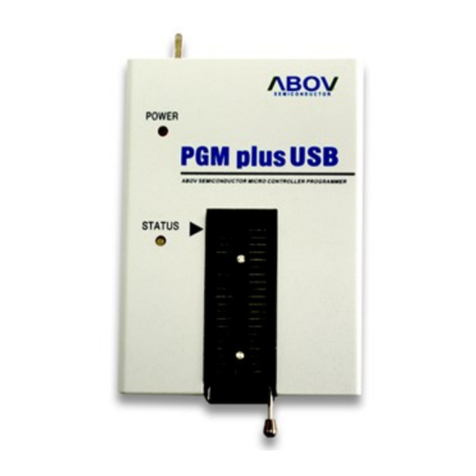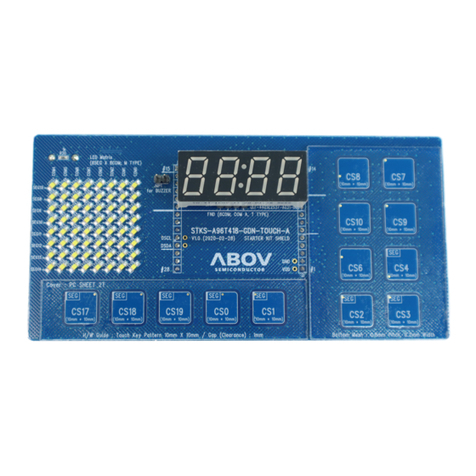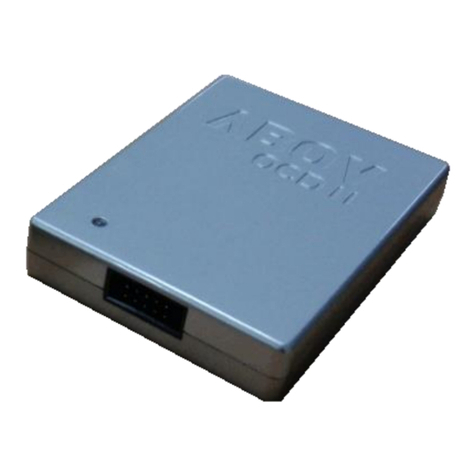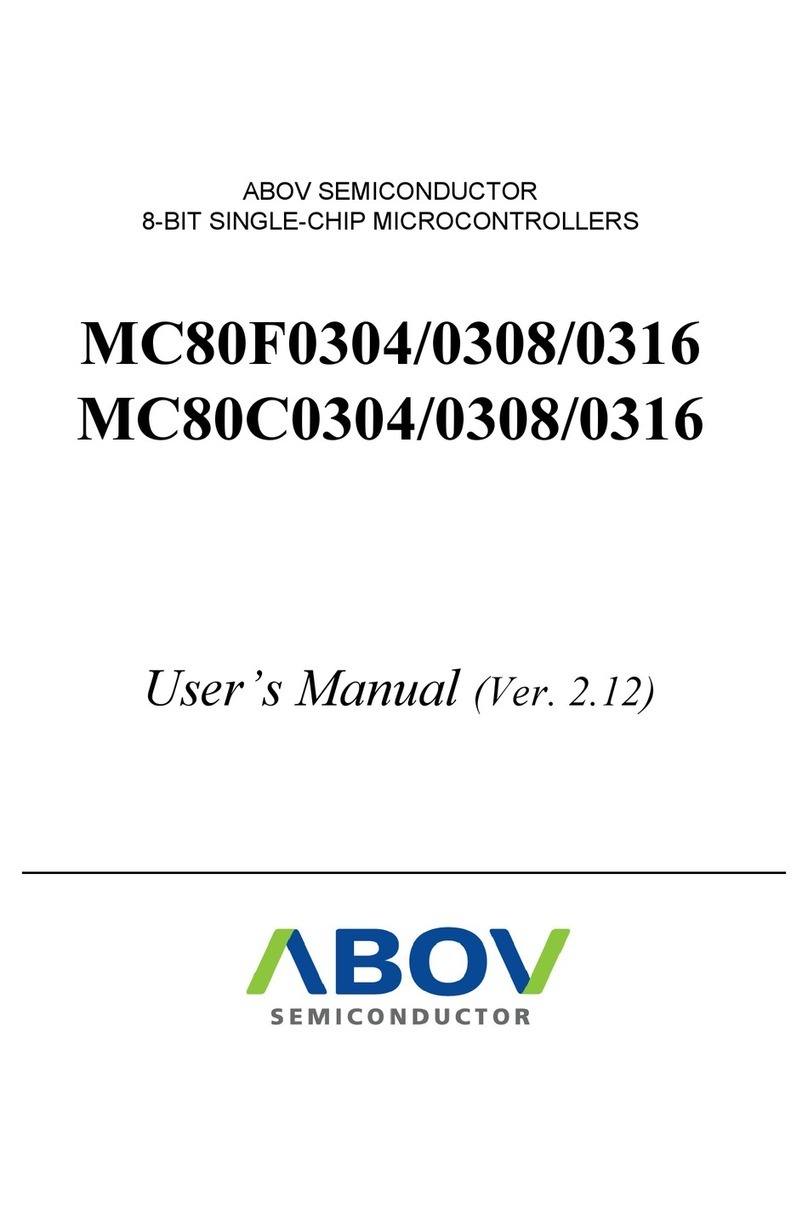
MC96FR116C
6 November, 2018 Rev.1.8
9.2 Register Description...................................................................................................................................49
10. Interrupt Controller.........................................................................................................................................55
10.1 Overview..................................................................................................................................................55
10.2 External Interrupt.....................................................................................................................................56
10.3 Block Diagram.........................................................................................................................................57
10.4 Interrupt Vectors......................................................................................................................................58
10.5 Interrupt Sequence ...................................................................................................................................58
10.6 Effective time of Interrupt Request..........................................................................................................59
10.7 Multiple Interrupts ...................................................................................................................................60
10.8 Interrupt Service Procedure .....................................................................................................................61
10.9 Generation of Branch Address to Interrupt Service Routine(ISR)...........................................................61
10.10 Saving and Restoring General Purpose Registers..................................................................................62
10.11 Interrupt Timing.....................................................................................................................................63
10.12 Interrupt Registers..................................................................................................................................63
11. Peripheral Units..............................................................................................................................................70
11.1 Clock Generator.......................................................................................................................................70
11.2 Basic Interval Timer (BIT) ......................................................................................................................72
11.3 Watch Dog Timer (WDT)........................................................................................................................75
11.4 TIMER/PWM ..........................................................................................................................................77
11.5 Watch Timer with event capture function (WT)....................................................................................106
11.6 IR Capture Control (IRCC)....................................................................................................................112
11.7 Carrier Generator...................................................................................................................................116
11.8 Key Scan................................................................................................................................................124
11.9 UART ....................................................................................................................................................127
11.10 I2C........................................................................................................................................................141
12. POWER MANAGEMENT ..........................................................................................................................158
12.1 Overview................................................................................................................................................158
12.2 PERIPHERAL OPERATION IN SLEEP/STOP/BOD MODE.............................................................158
12.3 SLEEP mode..........................................................................................................................................158
12.4 STOP mode............................................................................................................................................159
12.5 BOD mode.............................................................................................................................................161
12.6 Register Map..........................................................................................................................................164
12.7 Register Description...............................................................................................................................164
12.8 Power Sequence.....................................................................................................................................164
13. RESET..........................................................................................................................................................165
13.1 Overview................................................................................................................................................165
13.2 Reset source...........................................................................................................................................165
13.3 Block Diagram.......................................................................................................................................165
13.4 Noise Canceller for External Reset Pin..................................................................................................166
13.5 Power-On-RESET .................................................................................................................................166
13.6 External RESETB Input.........................................................................................................................168
13.7 Brown Out Detector...............................................................................................................................169
13.8 Register Map..........................................................................................................................................171
13.9 Register Description...............................................................................................................................171
14. On-chip Debug System.................................................................................................................................174
14.1 Overview................................................................................................................................................174
14.2 Two-pin external interface.....................................................................................................................175
15. FLASH Memory Controller .........................................................................................................................179
